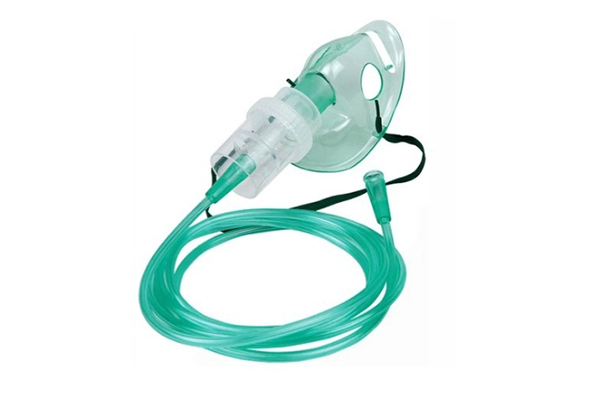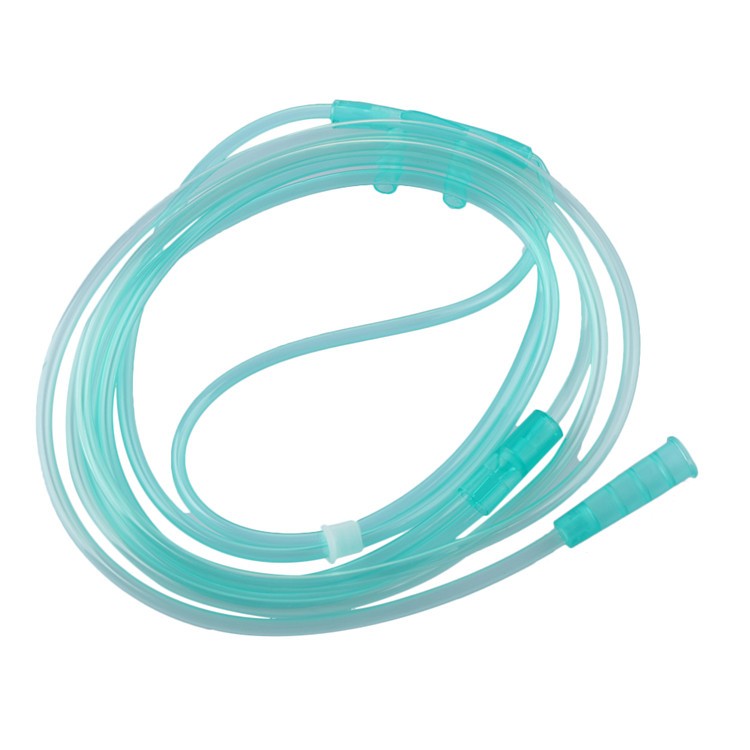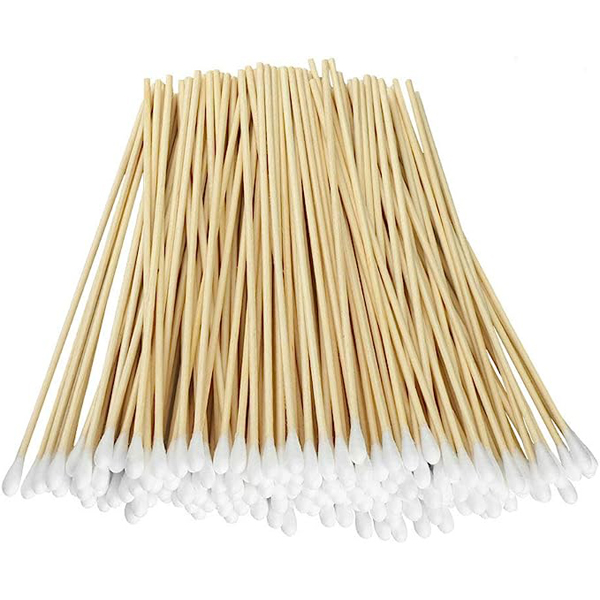Nebulizers are essential devices for individuals managing respiratory conditions like COPD and asthma, delivering medication directly to the lungs for effective relief. This article provides a comprehensive guide on how to use a nebulizer with a mask, ensuring you get the most out of your treatment and improve your lung health. We’ll break down the process step-by-step, answer common questions, and provide valuable tips for effective nebulizer use.
What is a Nebulizer and How Does it Benefit Your Lungs?
A nebulizer is a small machine that transforms liquid medicine into a mist that is inhaled. This mist makes it easier for the medication to reach deep into your lung, providing targeted relief for respiratory conditions. Unlike inhalers, which require a coordinated deep breath, nebulizers allow you to breathe normally while receiving treatment, making them easier to use for some individuals. Many people with chronic lung diseases such as COPD or asthma use a nebulizer to take their medication. The American Lung Association and MedlinePlus Medical Encyclopedia are excellent resources for further information on respiratory health. The mist that is inhaled through a mouthpiece or a mask ensures the medication is correctly distributed throughout your airways.
Think of it like a tiny humidifier, but instead of just water vapor, it’s filled with your prescribed medication. This fine mist can bypass some of the physical challenges people face when trying to use an inhaler effectively. For instance, patients who have a hard time using inhalers because of health issues or those patients who are unable to inhale deeply enough for other devices often find nebulizers more manageable. This direct delivery to the lung can lead to quicker and more efficient relief from symptoms.
Why Might Your Doctor Recommend You Use a Nebulizer with a Mask?
Your health care provider might recommend you use a nebulizer with a mask for several reasons. For younger children or individuals who find it difficult to keep a mouthpiece in your mouth and close your lips tightly around it, a mask provides a more secure and effective delivery method. When using a facemask, it covers both the mouth and nose, ensuring that the medication is inhaled even if the person breathes through their nose. This is especially important for those who may have difficulty coordinating their breathing with a mouthpiece.
Another reason for choosing a nebulizer with a mask is the type of medication being administered. Some medications are more effectively delivered using this method. Ultimately, the decision on whether to use a mask or mouthpiece depends on individual needs and the advice of your healthcare professional. They will decide which type works best for your specific situation, considering factors like age, ability to cooperate with the treatment, and the specific medication prescribed. For example, children usually find it easier to wear a mask during their nebulizer treatment.
Setting Up Your Nebulizer Treatment: What Components Do You Need?
Before you use your nebulizer, it’s important to understand its components. Nebulizers come with several key parts: a compressor, tubing, a medicine cup, and either a mouthpiece or a mask. The compressor is the air machine called the base unit that plugs into an electrical socket for indoor use or may be battery-operated for portable use while not at home. The tubing connects the compressor to the medicine cup. The medicine cup is where you pour it into the medicine, your prescribed liquid medication. Make sure the nebulizer in an upright position to prevent spilling and to ensure the medication is correctly administered.
Setting up is usually straightforward. First, place the compressor on a stable surface. Then, connect one end of the tubing to the compressor and the other end to the medicine cup. Open the medicine cup and carefully pour the prescribed amount of medication into it. Finally, attach to a mask or mouthpiece to the medicine cup. Ensure all connections are secure before starting the treatment.
Step-by-Step Guide: How to Use a Nebulizer Effectively to Inhale Medication?
Now, let’s walk through how to use a nebulizer to take your medication. First, wash your hands thoroughly. Connect the tubing from the compressor to the medicine cup. Pour the prescribed medication into the medicine cup. Attach the mask or mouthpiece to the medicine cup. If using a mask, gently put the mask over your mouth and nose, ensuring a snug fit. If using a mouthpiece, place the mouthpiece in your mouth, ensuring your tongue doesn’t block the opening, and close your lips tightly around it.
Turn on the compressor. You should see a mist coming from the mask or mouthpiece. Breathe normally through your mouth until the nebulizer will tell you the medicine is used, which usually takes about 10-15 minutes. Sit in a comfortable, upright position to prevent spilling. If the nebulizer treatment needs to be interrupted, turn off the machine. Once the misting stops, the treatment is complete. Turn off the compressor and detach the mask or mouthpiece.
Getting the Most Out of Your Nebulizer Treatment: Tips for Optimal Lung Delivery?
To ensure you’re getting the most benefit from each nebulizer session, consider these tips. Sit upright during the treatment to allow for optimal lung expansion. Breathe slowly and deeply, if possible, to help the medication reach deeper into your lungs. If using a mask, ensure it fits snugly to minimize leakage. If using a mouthpiece, close your lips tightly around it. Take the medicine as prescribed by your healthcare provider and ensure the medication is correctly measured and poured into the medicine cup.
Pay attention to the mist. A steady stream indicates the nebulizer is working correctly. If the misting is intermittent or weak, check all connections. Continue the treatment until the medicine cup is empty or the nebulizer starts sputtering, indicating that most of the medication has been delivered. Avoid talking or distractions during the treatment to focus on breathing.
How Often Should You Use a Nebulizer for Effective Nebulizer Treatment?
The frequency of use a nebulizer depends on your specific condition and your doctor’s instructions. For some, it might be several times a day, while others may only need to use it a few times a week or as needed during flare-ups. Always follow your healthcare provider’s recommendations regarding the frequency and duration of your nebulizer treatments. Consistency is key to managing your respiratory condition effectively.
It’s also important to understand the purpose of each treatment. Some medications are for immediate relief of symptoms, while others are for long-term management. Knowing this can help you adhere to your prescribed schedule. If you have any questions or concerns about how often to use your nebulizer, don’t hesitate to contact your healthcare provider.
Cleaning and Maintaining Your Nebulizer: Ensuring Longevity and Hygiene?
Proper cleaning and caring for your nebulizer are crucial for preventing infections and ensuring the device functions correctly. After each use a nebulizer, rinse the medicine cup and mask or mouthpiece with warm, soapy water. Shake off excess water and allow them to air dry completely on a clean surface. Once a day, or as recommended by the manufacturer, disinfect the parts. You can do this by soaking them in a solution of white vinegar and water (1 part white vinegar to 3 parts water) for about 30 minutes. Rinse thoroughly with sterile or distilled water and allow to air dry.
The compressor usually doesn’t require cleaning, but you can wipe it down with a damp cloth as needed. Replace the nebulizer kit (medicine cup, mask/mouthpiece, and tubing) according to the manufacturer’s instructions, typically every few months. Regularly check the tubing for any cracks or damage and replace it if necessary. Refer to your nebulizer’s instruction manual for specific cleaning guidelines and recommendations. You can often find demonstration videos and information on cleaning and caring for your device on the manufacturer’s website or the american lung association’s website.
What Are the Different Types of Nebulizers Available?
While the basic function remains the same, there are different types of nebulizers available. The most common type is the jet nebulizer, which uses compressed air to create the mist. These are generally less expensive and can be used with most types of medication. Another type is the ultrasonic nebulizer, which uses sound vibrations to aerosolize the medication. Ultrasonic nebulizers are often quieter and faster but may not be suitable for all medications.
More recently, mesh nebulizers have emerged, which use a vibrating mesh to create the aerosol. These are often more portable and efficient. Your doctor will help you decide which type works best for your needs and lifestyle. Considering factors like portability, noise level, and the type of medication needed can help in making the right choice.
Where Can You Get a Nebulizer and the Necessary Supplies?
You can usually get a nebulizer with a prescription from your doctor. Medical supply stores, pharmacies, and online retailers are common places to purchase nebulizers. Your insurance may cover the cost of the nebulizer and necessary supplies, so it’s worth checking with your insurance provider. When purchasing, ensure the device meets relevant medical standards and is appropriate for your prescribed medication.
In addition to the nebulizer machine itself, you’ll need replacement nebulizer kits (including the medicine cup, mask or mouthpiece, and tubing). These are consumable items that need to be replaced regularly. Allen from China, operating a factory with 7 production lines, produces high-quality medical-grade materials for items like medical cotton, cotton balls, cotton swabs, and medical gauze, which are often used in conjunction with nebulizer treatments for hygiene. His B2B business, ZhongXing, exports to countries like the USA, North America, and Europe, supplying hospitals, clinics, and medical distributors. Potential customers looking for reliable suppliers can find them at medical device and healthcare exhibitions.
Troubleshooting Common Nebulizer Issues: What to Do When Things Go Wrong?
Sometimes, you might encounter issues with your nebulizer. If the nebulizer isn’t producing a mist, check that all connections are secure and that the compressor is turned on. Ensure there is medication in the medicine cup. If the mist is weak, the tubing might be blocked or kinked, or the filter on the compressor might be dirty and need replacing. Refer to your nebulizer’s instruction manual for specific troubleshooting steps.
If your nebulizer is making unusual noises, it might indicate a problem with the compressor. Contact the manufacturer or the supplier if you experience persistent issues. Never attempt to repair the nebulizer yourself. For additional support and new treatments in respiratory care, consider visiting the american lung association’s website or consulting lung health experts. Remember, prompt attention to any problems can ensure your nebulizer remains effective and reliable.
Key Things to Remember About Using a Nebulizer:
- Nebulizers deliver medication directly to your lungs, making breathing easier.
- Using a mask can be more effective for young children or those who have trouble with mouthpieces.
- Follow your doctor’s instructions on medication dosage and frequency of use.
- Clean and disinfect your nebulizer regularly to prevent infections.
- Replace the nebulizer kit as recommended by the manufacturer.
- Contact your healthcare provider or the manufacturer if you encounter any problems with your device.
- High-quality medical supplies, like those produced by ZhongXing, play a vital role in effective healthcare.
By following these guidelines, you can confidently use your nebulizer with a mask and take control of your respiratory health.
Post time: 1月-18-2025








